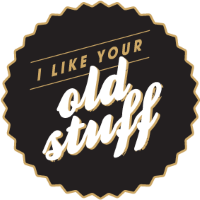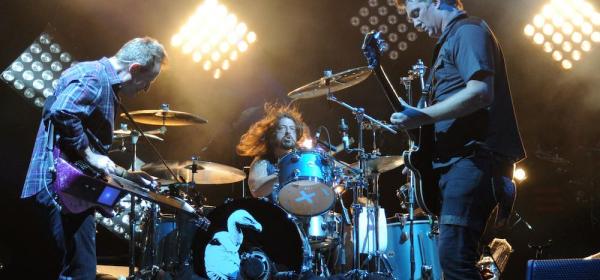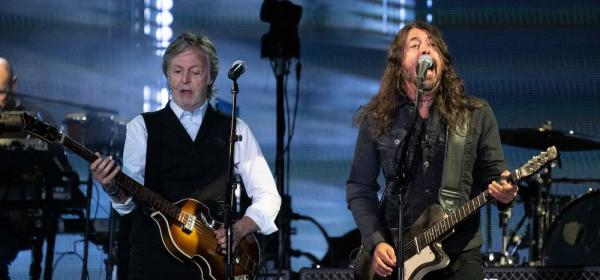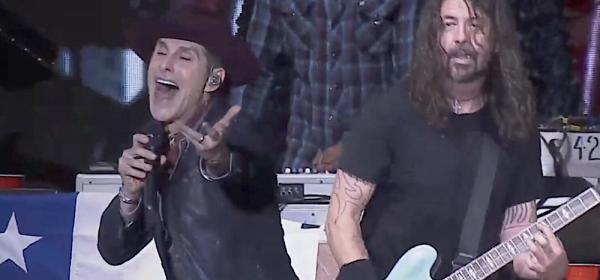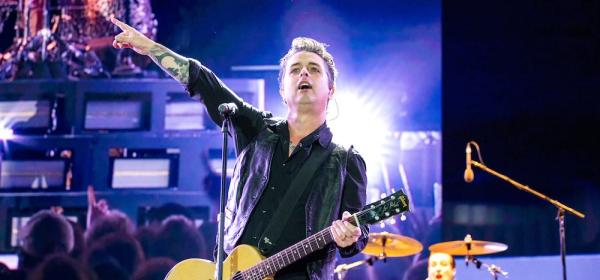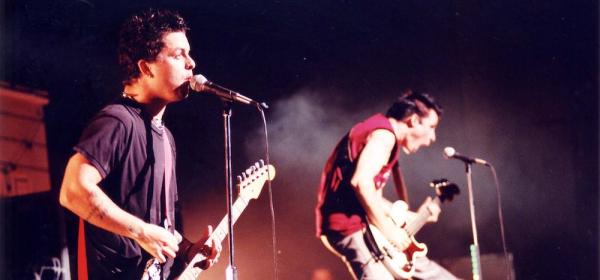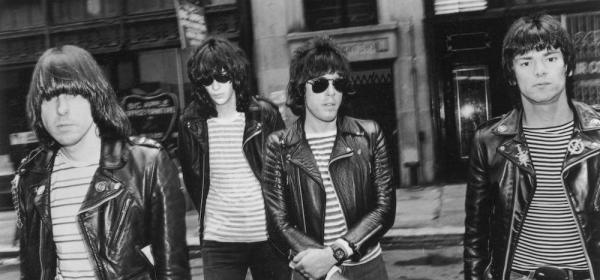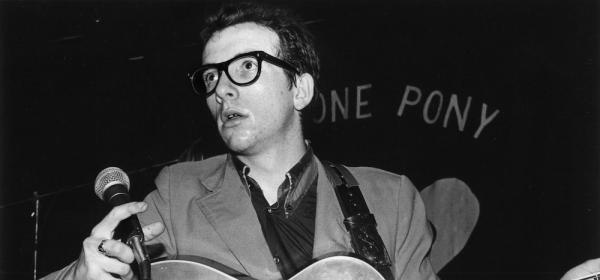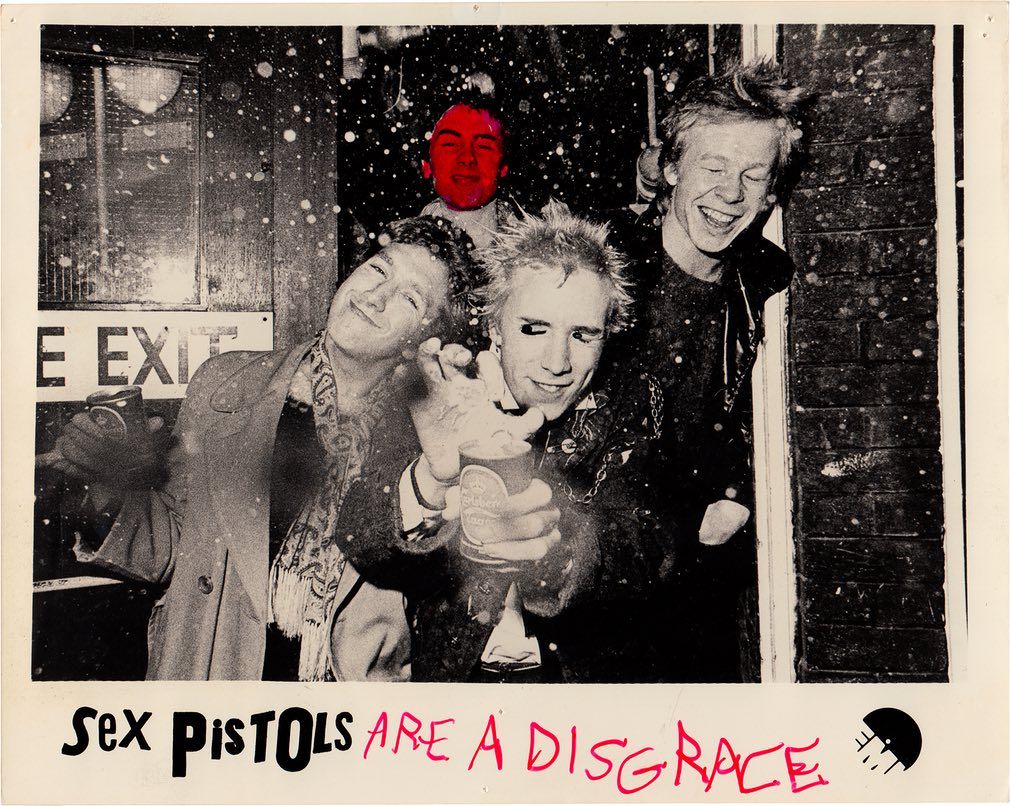
November 1976. EMI Sex Pistols publicity still from the wall of the Glitterbest offices, the company owned by Malcolm McLaren. All images: Rizzoli/Anthology Editions
Yep, there’s been a few books about the Sex Pistols over the years, but there’s been nothing like God Save The Sex Pistols, a massive new tome edited by Johan Kugelberg, author Jon Savage, and Sex Pistols archivist Glenn Terry.
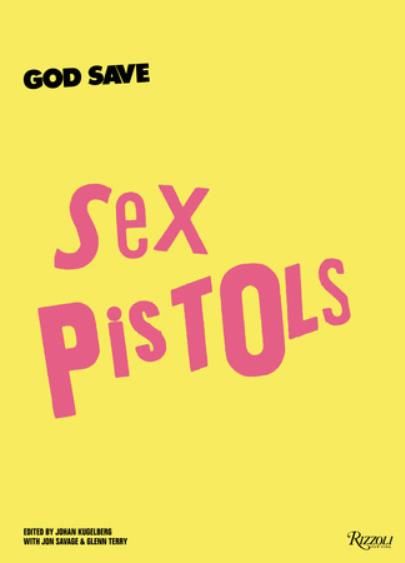
God Save the Sex Pistols is a definitive high-end visual record of the punk band. Published to coincide with the fortieth anniversary of the band’s formation, it draws on an unprecedented wealth of material—from McLaren’s handwritten letters to never-before-seen photographs of the band, Jamie Reid’s iconic album artwork, and a range of ephemera from concert tickets to fanzines—to produce the most comprehensive visual history of the band ever produced and a bible of popular culture for years to come.
Of special interest to Australian fans will be the fact one of the 3 men behind the book is Australian and is very well known in record collecting circles. Glenn Terry began in music retail at the great early Au-go-go store in Melbourne in the late ‘80s. Prior to that he’d been at much loved pop culture bookshop Gaumont Books, and also the co-publisher/co-editor of the groundbreaking Australian record collectors publication ‘From The Vault’, with Au-go-go’s Bruce Milne and Aussie ‘60s authority, the late Dean Mittlehauser. Since departing Au-go-go he’s been the co-owner of the collector’s paradise Vicious Sloth in sleepy Malvern. Vicious Sloth was also a reissue label at one point (it reissued rare Australian material by the likes of Lobby Loyde, Jeff St John’s Copperwine, Tymepiece, the Cleves and more); since then Glenn has been actively involved in many of Aztec’s reissues of Australian material, and he also put together Festival Records’ great 2015 release When Sharpies Ruled.
Sex Pistols - "God Save the Queen"
ILYOS caught up with Glenn for a quick Q&A...
1. Congratulations on the publication of the book Glenn. I know it’s been a long time coming. Can you tell us a bit about how the project started off and how you connected with Jon and Johan?
I’ve known Johan Kugelberg for ages through record collecting circles. He had a good connection with Rizzoli books in New York through putting together several titles, including a study of the Velvet Underground, for them. Shortly after that he contacted a group of punk collectors during the compiling of the Punk: An Aesthetic tome which was a really interesting visual narrative on the imagery of punk and the DIY ethic. Having contributed some material for this we stayed in touch. It was his suggestion, that he along with Jon Savage and myself should put together a similar type of project covering the Sex Pistols. So we got to work and here it is.
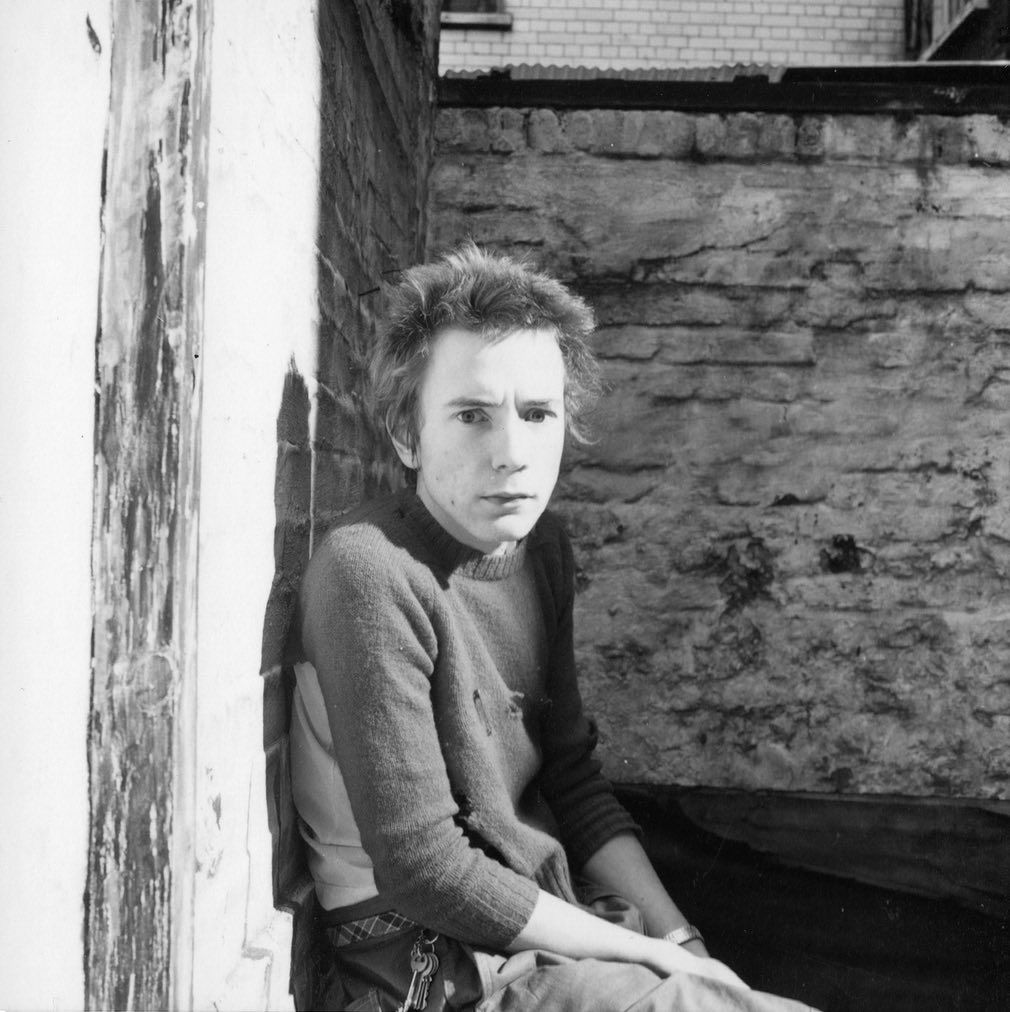
Late 1975. Portrait of Johnny Rotten by Peter Christopherson. Christopherson, whose workspace was next to the Sex Pistols’ rehearsal space, was a member of the Hipgnosis design collective, and went on to become a member of industrial bands Throbbing Gristle, Psychic TV and Coil. All images: Rizzoli/Anthology Editions
2. How/when did you begin collecting Pistols stuff in earnest? (Beyond buying the records...) How did you go about getting stuff?
Started collecting printed items and odd bits and pieces from about the end of 1977. I found the records fascinating and wanted more information about what the band were doing along with the rest of the punk scene in general. I sent away to England for something mail-order from an advertisement in one of the weekly music mags, the items arrived then I really caught the collecting bug although I had bugger all money in those days so it also taught me how to trade records and memorabilia with people overseas. After the Great Rock’n’Roll Swindle and throughout the 1980's the Sex Pistols were a bit overlooked by collectors except for the hard core among us, unlike today where due to the fortieth anniversary, interest is stronger than ever. Several of the quirkier things in the book are from my collection and these have been exhibited in different parts of the world at various times.
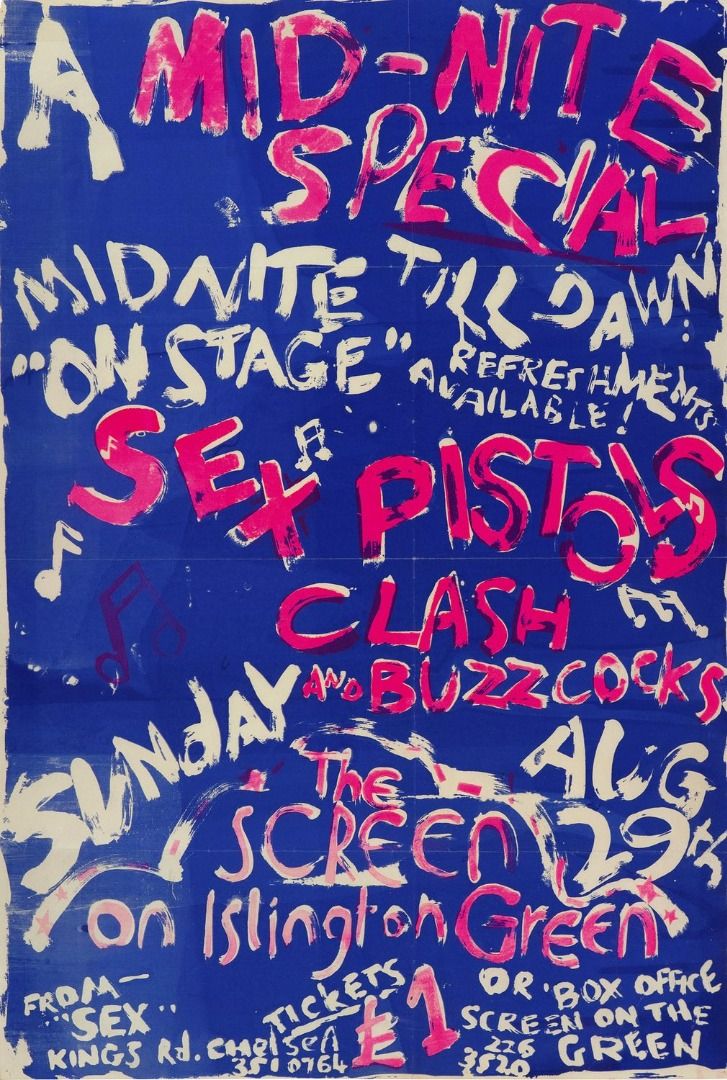
29 August, 1976. Silkscreened poster for the Screen on the Green performance. As few as three copies of this fragile silkscreened poster are thought to still exist, advertising three of punk’s biggest bands – Sex Pistols, the Clash and Buzzcocks – on the same bill. All images: Rizzoli/Anthology Editions
3. Going back a bit – you are were a young sharpie when punk first hit. What are your memories of your early exposure to it and how did it relate to what you were into when it did hit?
I was in grow-out sharpie mode when I started at Uni in 1976 and Punk first hit at the end of that year. I'd seen quite a few bands by that time including the Coloured Balls, AC/DC and Skyhooks and had a small but concise record collection. British glamsters Slade were early favourites in my teens and I still think they were one of the great live bands. Having been through that I was used to the hurly burly of what a rock n roll concert should be about and developed tastes along those lines. When Punk came along it certainly had the energy to excite, and added a different sense of artistic presentation with an emphasis on imagery and fashion masquerading as anti-fashion. Punk also managed to put across its message of boredom and social disengagement far more succinctly than any youth movement before it.
4. Being stranded down under at the time meant you never saw the Pistols first time round – who were your favourites on the local scene?
Favourites on the local scene were all the obvious ones like the Saints, Radio Birdman, Victims, Psycho Surgeons, Babeez / News, Scientists, Negatives, JAB, Teenage Radio Stars / Models, La Femme, Chosen Few, Leftovers etc. you get the idea.
News - "Dirty Lies"
5. So what do you feel about the Pistols now, and what their legacy is? Who are your other punk favourites?
These days I think that the influence of the Sex Pistols is immense and the flow on effect probably immeasurable. They gave popular music a kick along at a time when just about all life had been drained out of it. There still exists a musical style, a particular look in graphic design and the way in which ideas are presented, which so obviously harks back to the heady days of the late 1970's. Also much of the DIY ethic in music relates back to that time. Other favourites were The Buzzcocks, The Clash, The Damned, The Drones, Eater, The Fall, Slaughter and the Dogs, Wire, XTC on and on. Added to this was the American influence, coming from a slightly different angle but no less important, including The Ramones, Patti Smith, Richard Hell / Television, Heartbreakers and Pere Ubu. There were so many bands by mid 1977 it was hard to keep up. There have been any number of really good bands over the past four decades whose ethos is rooted in that style, and I have certainly kept up a collection of favourite examples from their output.
6. What other stuff do you listen to these days?
Being employed in book and record stores ever since I finished at university has allowed me to follow my passion for music on a regular daily basis virtually throughout my entire adult life. Being inquisitive by nature and through my position as one of the owners of the Vicious Sloth Collectables record store, it has meant that I have been able to discover music which would otherwise have remained totally unknown to me. Old-time country, Rebetika, sanctified singers, wild R'n'B, hillbilly / rockabilly music, country blues, ska & bluebeat, industrial / electronic, musique concrete, acid folk, any amount of ethnic music and modal sounds, it's a pretty diverse field.
7. For readers who’ve never been there, tell us about the Vicious Sloth store and who some of your customers are.
The Vicious Sloth store presents a curated collection of mainly vinyl records and publications which we feel represent an interesting cross section of the best examples from genres about which we have a reasonable knowledge. So you could expect to find Punk and Post-punk, Industrial, Rockabilly, Blues & R'n'B, Soul, Jazz, lots of Australian music from the 50's right up to date, Pop music especially 1960's - 1980's, Reggae, Psych, Garage, Progressive & Heavy rock. Apart from the shop we have a full online presence with mail-order customers around the world. Store customers have included among others, the likes of Henry Rollins, J Mascis, Lars Ulrich, Kirk Hammett, Joe Elliott, Mike McCready, Matt Cameron, Dave Grohl, Thurston Moore, Steve Shelley, Ben Blackwell, Barrence Whitfield, Dennis Lyxzen, Nicky Garratt, Wade McNeil, the guys from Fucked Up and Alexisonfire, Baroness, Endless Boogie, and of course rock photographer Ross Halfin who is a real vinyl fiend. On top of that we have many talented participants in the Australian music scene, from the Sixties right up to date, who are both friends and customers, but we are every bit as happy to meet interested newcomers who we can turn on to some great sounds!
8. What other music books would you recommend?
Among the music books I would recommend are: England's Dreaming, Psychotic Reactions and Carburetor Dung, Guitar Army, The Sound Of the City, Honkers and Shouters, Nothing But The Blues, Louie Louie, A Crack in the Cosmic Egg: Encyclopedia of Krautrock, Japrock Sampler, The Fallen: Life In and Out of Britain's Most Insane Group and Mansion on the Hill which presents a look at the inner workings of the music business.
9. You put together When Sharpies Ruled and now this – what’s next as far as projects go?
A good rest. Seriously.
God Save the Sex Pistols by Johan Kugelberg, Jon Savage, and Glenn Terry, is out now via Rizzoli. Two deluxe editions are also available via Anthology Editions. Australian readers can buy from Glenn at Vicious Sloth – vsc@bigpond.net.au. Send email for details.
For more info on the Glenn Terry compiled Festival Release When Sharpies Ruled, head this way.
- DL
